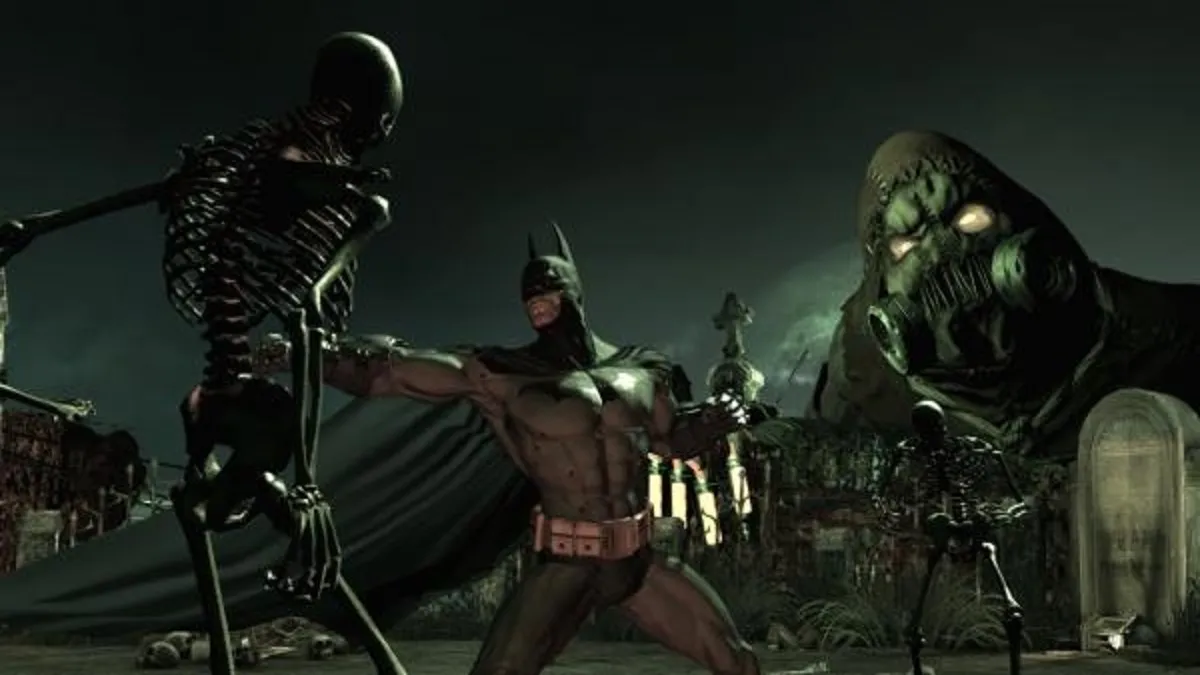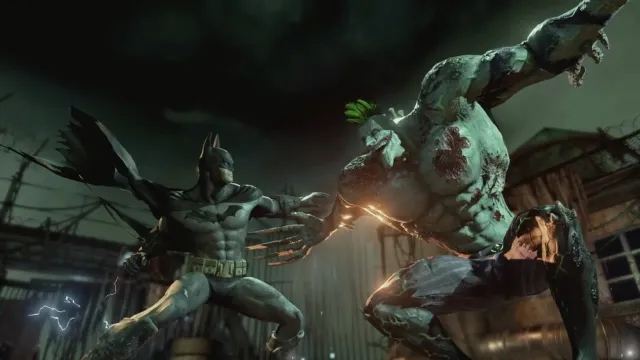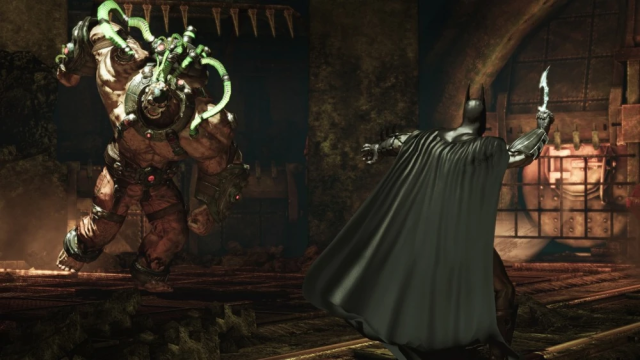8 Reasons Why Batman: Arkham Asylum is Secretly a Horror Game
Rocksteady's superhero classic is horror in disguise

It has been over 14 years since the launch of Batman: Arkham Asylum, the groundbreaking superhero title from Rocksteady Studios, which arrived on PC, PS3, and Xbox 360 back on August 25, 2009. Arkham Asylum became a massive hit, selling approximately ten million copies, spawning acclaimed sequels (Arkham City and Arkham Knight), and to this day, Rocksteady’s 3D Batman Metroidvania remains a highly influential title for the action-adventure and superhero genres.
However, while subsequent Arkham games would build upon the debut entry with huge open worlds and significant gameplay improvements, there is one aspect of Asylum that the rest of the series could never quite recapture: the horror. Undeniably, the most unsung element of Rocksteady’s Batman debut, which makes it feel so differentiated from every other title in the series, is that Arkham Asylum is secretly a horror game. With the spooky season upon us, here are eight reasons why Batman: Arkham Asylum deserves recognition as a classic of the horror genre and is worth trying out (or replaying) this Halloween.
Spoilers ahead for Batman: Arkham Asylum.
Arkham Asylum Living Hell

The setting of Rocksteady’s first Batman game has all the trappings commonly found in horror, which isn’t necessarily surprising with a name like “The Elizabeth Arkham Asylum for the Criminally Insane”. With eerie halls and corridors that reverberate creepy, chiming piano music, sprawling grounds for escaped inmates to hide, and disturbing medical imagery abound, Arkham Asylum is not for the faint of heart (and far removed from the days of Adam West and Burt Ward’s campy Batman television series). Additionally, the asylum setting houses some of DC’s most dangerous super-criminals, serial killers, and psychopaths.
Killer Clowns from Outer Gotham

Speaking of psychopaths, even though all of Rocksteady’s Arkham games have pitted Batman against terrifying serial killers (such as Victor Zsasz) and explored darker themes, Asylum objectively outperforms the rest of the series in this regard. From the lowest-ranking henchmen to the bosses, the enemies in Arkham Asylum are far scarier than the rest of the franchise.
For example, the average Joker underlings have unnerving appearances, showing signs of suffering brain experimentation at the hands of Arkham Asylum’s doctors with incisions slashed across their heads, sutured with staples. There are also the jump-scare fuel “lunatics,” which are the malnourished-looking, feral inmates that pop out from hiding and sprint at Batman, viciously attacking while shrieking. Next, the game’s prominent mini-bosses are known as “Titan henchmen,” Arkham residents who have been injected with an experimental drug (the aforementioned Titan) that turns them into gargantuan, raging monsters.
All of these enemies (and more that will be discussed later on the list) are encountered before the final boss battle that pits Batman against a Titan-infused Joker, morphing the “Clown Prince of Crime” into a hulking monstrosity with razor-sharp claws, arguably the villain’s most unsettling form in any medium. Although “scariness” is subjective, I find many of these enemies to be far more intimidating than their counterparts in later Rocksteady Batman games, as well as many other horror experiences I’ve previously played, demonstrating Arkham Asylum’s spooky street cred.
American Horror Story: Gotham City

Here is my best description of Batman: Arkham Asylum’s premise, “When a mass-murdering clown and his gang seize control of an insane asylum housing the world’s most dangerous killers and kidnap its Warden and staff, a haunted vigilante stands as the last line of defense for the hostages and residents of nearby Gotham City.” There is simply no way around it, Arkham Asylum’s story is textbook horror. Although some might argue semantics over the exact subgenre, broadly speaking, the story lies clearly within the umbrella of horror, and you definitely won’t find a scarier premise in a superhero game.
Scarecrow

Even though the Joker is Arkham Asylum’s primary antagonist, there is a strong case to be made that the biggest thorn (or needle) in Batman’s side throughout the game is actually Scarecrow. Rocksteady created one of the most memorable incarnations of Jonathan Crane to date, bringing a fresh take on the character through a combination of original ideas mixed with previous Scarecrow concepts from the comics. Throughout Arkham Asylum, Batman endures multiple tense sections against the burlap sack-faced supervillain with a Freddy Krueger-styled needle glove, who uses fear toxin to induce hallucinations filled with disturbing imagery, forcing the Caped Crusader to relive some of his most traumatic memories and confront his greatest fears. Scarecrow provides a psychological horror component that is one of the defining features of Arkham Asylum.
Killer Croc’s Lair

Late in the story of Arkham Asylum, Batman is tasked with infiltrating the man-eating Killer Croc’s lair to stealthily collect plant spores. While walking across platforms above water, the Dark Knight is hunted by the human/reptile hybrid lurking below, waiting for the opportunity to pull Batman under for his next meal and “rip his flesh like paper” (yes, that’s a real quote). Sneaking around Killer Croc’s lair is probably the scariest part of the entire game, as players are required to slowly and deliberately walk from spore to spore, not disturbing the water, as making too much noise will send Batman to a watery grave in the murky depths below.
Not to mention that Killer Croc will randomly burst out of the water and charge at Batman, accompanied by a frightening music score blaring simultaneously. Everything about Killer Croc’s encounter screams horror, and if I may be so bold, this memorable reptilian moment in Arkham Asylum is much scarier than the alligator sections from the original Resident Evil 2 and its 2019 remake, both of which are ranked among the greatest horror games ever made.
Spooky Lore & Collectibles

The backstory and lore of Arkham Asylum tend to be more frightening than the actual game. Through finding collectibles and examining clues within the environment, players can discover the disturbing truths and side stories of the asylum and its denizens. Patient interview tape collectibles tell horror vignettes for Arkham Asylum’s most notorious villains, each giving players a glimpse into the deranged minds of Batman’s foes.
Furthermore, in the various asylum locations, there is ample evidence of Arkham’s doctors and staff suffering from their own psychoses and severely mistreating the patients in their care (another common horror trope). Most importantly, the “Spirit of Arkham” collectibles episodically reveal a creepy origin story told by the purported ghost of Amadeus Arkham. While I won’t spoil it, discovering the true identity behind the “Spirit of Arkham” through acquiring all of the supernatural collectibles is an even more frightening development than a potential poltergeist. All of these collectibles are just as scary (if not scarier) than findable lore items in plenty of other horror games through the years.
Arkham Asylum: A Serious House on Serious Earth

Rocksteady’s Arkham Asylum clearly draws from many influences from Batman comics, but it seems to most heavily borrow from Grant Morrison and Dave McKean’s 1989 graphic novel Arkham Asylum: A Serious House on Serious Earth. The story has been lauded as one of the greatest Batman comics of all time and is squarely placed within the psychological horror genre.
Morrison’s 1989 graphic novel has plenty of differences from Rocksteady’s videogame but ultimately follows the same premise of Batman descending into the eerie depths of Arkham Asylum to apprehend the Joker. The haunting illustrations by McKean and the creepy imagery on display were clear inspirations for visuals found in 2009’s Batman: Arkham Asylum.
“What would break first… your spirit or your monitor?”

Lastly, some of Arkham Asylum’s biggest scares are found in Rocksteady’s repeated attempts to mess with gamers’ heads. In a mind-bending sequence somewhat late in the story, out of nowhere, players’ screens will suddenly glitch, making it appear as though their game has frozen and crashed. However, this is a trick, as the glitch is quickly followed by a cutscene featuring an inverted version of the game’s introduction, with the Joker and Arkham’s supervillains wheeling a restrained Batman into Arkham Asylum, ending with the hero being shot to death. A game over screen follows, explaining, “Mission Failed: use the middle stick to dodge Joker’s gunfire.” But there is no middle stick and no way to evade the Joker’s bullet, as the entire scene is a set piece made for the sole purpose of disorienting and scaring gamers, demonstrating yet another example of Arkham Asylum’s penchant for horror.
Unmasking the Horror of Arkham Asylum

There are certainly horror games that far exceed the scariness and gore of the “T for Teen” rated Arkham Asylum, but it doesn’t change the fact that Rocksteady’s Batman debut deserves recognition as a card-carrying member of the genre. Arkham Asylum blends superhero, action-adventure styled gameplay with Metroidvania elements, but horror is the cornerstone of the game’s formula.
Although Arkham Asylum may not be as pure horror as standard-bearers like Resident Evil and Silent Hill, from the setting to the enemies, premise, backstory, influences, set pieces, and more, Rocksteady masterfully executed a Batman horror game from start to finish, which has not been replicated before or since. So as you sit down to play some spine-chilling games during the Halloween season, keep Batman: Arkham Asylum in mind as a source of some frightening fun. Even 14 years later, there are still plenty of horrors to find (or revisit) in this spooky superhero classic.
